- Home
- slideshows
- miscellaneous
- From mermaids to treasure hunters, inside 6 incredible jobs most people would never think of pursuing
From mermaids to treasure hunters, inside 6 incredible jobs most people would never think of pursuing
Paisley Easton was introduced to the world of mermaids by a high school friend

Prospective mermaids at Weeki Wachee Springs State Park in Florida have to undergo a number of tests before they earn their tails
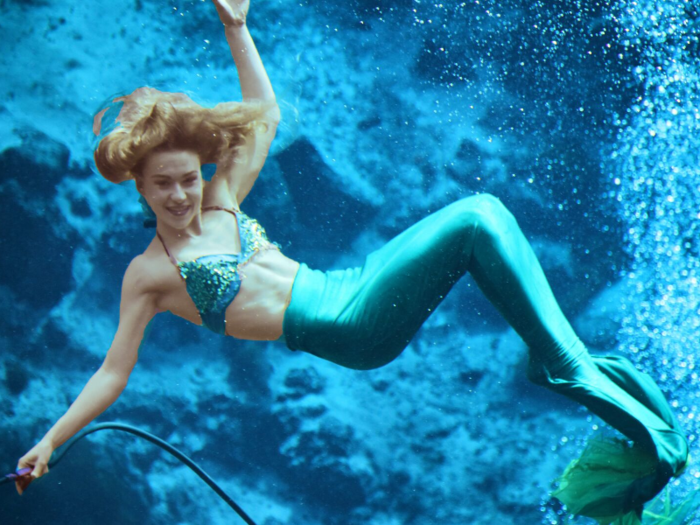
Easton had visited the tourist attraction as a kid, but that conversation was what sparked her interest. Typically, prospective mermaids audition in groups of 60, but Easton's friend snagged her a private audition.
To make the cut, Easton had to swim 400 yards in 16 minutes, try out some underwater moves, and do breath exercises.
"I had to take a breath, hold, and smile and wave at the windows so they could watch how comfortable I was," she said. "You've got to make sure that your face just looks calm and relaxed and not scrunched up. And you've got to keep your eyes open."
Easton said the mermaid performances have brought out her more outgoing side
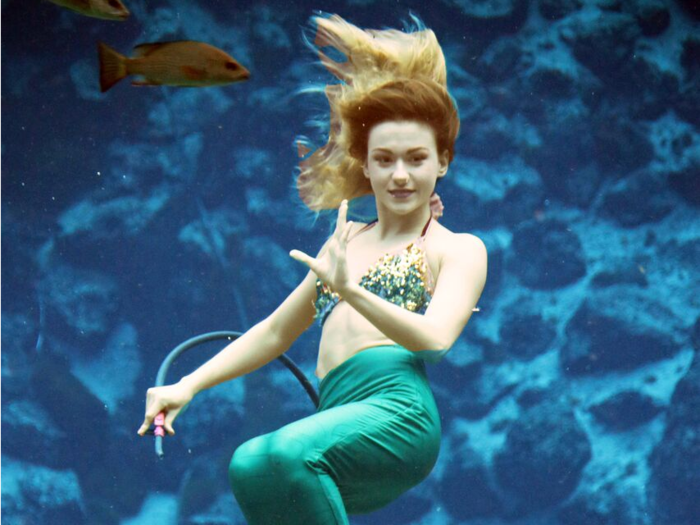
Easton ended up getting the gig. Along with the other new mermaids, she trained to swim relying on her arms, keeping her legs straight and her ankles together.
Wearing the costume fish tail actually makes swimming easier, Easton said, because it keeps your legs together for you. The mermaids perform three shows a day, but Easton said swimming before an audience isn't too stressful, and the job has brought out her more outgoing side.
Easton said the mermaids at Weeki Wachee Springs State Park are like a second family

"I can't see people watching me, so it's kind of like I'm in my own little world," she said.
Sometimes, she also gets to meet-and-greet the guests. Easton said she especially enjoys getting to meet with the kids who come to see the mermaids.
"Overall, it's a lot of fun," Easton said. "It's like a family here. We're having fun all throughout the day. It doesn't seem like work."
Sean Kenney has been creating with LEGOs since he was a kid
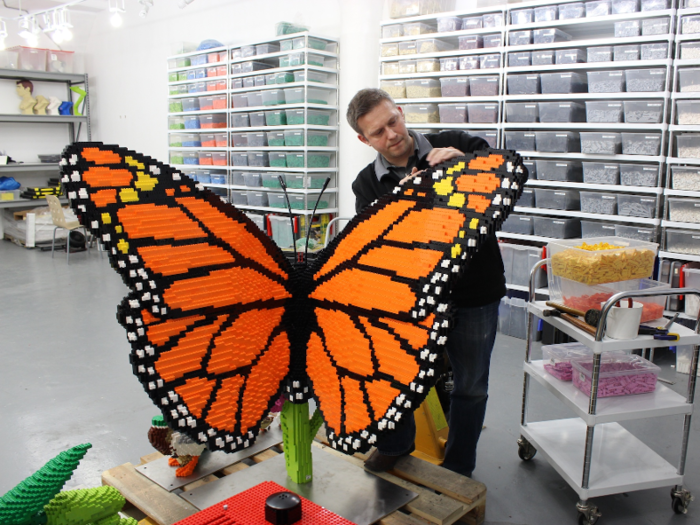
Sean Kenney started building LEGO creations as a kid, and hasn't stopped since.
"I'd never really put my LEGO bricks down when I was growing up, so back when I had a 'normal job,' every night after work I would go home and build things," he told Business Insider.
The New York-based artist is known for his LEGO sculptures, and was even recognized as a "LEGO certified professional" by the LEGO group. He pointed out that that isn't his title or even his job — it's a status he's achieved because of his artwork.
Before he began pursuing his creative interests full-time, Kenny worked as a graphic designer and a web designer. He said he spent 10 years working in an office, but "slowly learned that you don't have to do what society tells you the 'right thing' is to do.
He walked out of his office job 15 years ago, and launched a new career as an artist
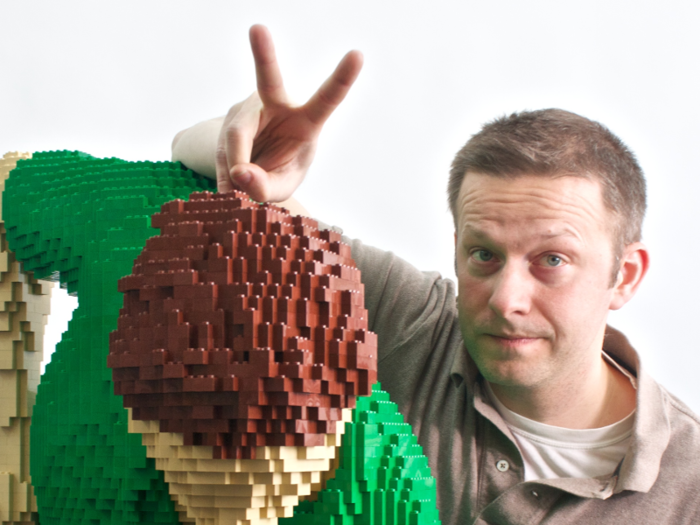
Kenney decided to make a move after he found himself "daydreaming about making LEGO models of beautiful architecture" one day at work 15 years ago.
"I realized that I should follow my dreams and do what I love ... what I truly love," he said. "So I stood up and walked straight out — just like that, in the middle of the day. And I never looked back."
He gravitated toward using LEGOs to create artwork, a style and medium which jived with his cartooning abilities.
"LEGO sculptures are, in many ways, kind of like 'cartoony sculptures,' so I think they work naturally with the kind of person I am and with my visual sensibility," Kenney said.
Today, Kenney works in a studio with a huge wall of LEGO bins
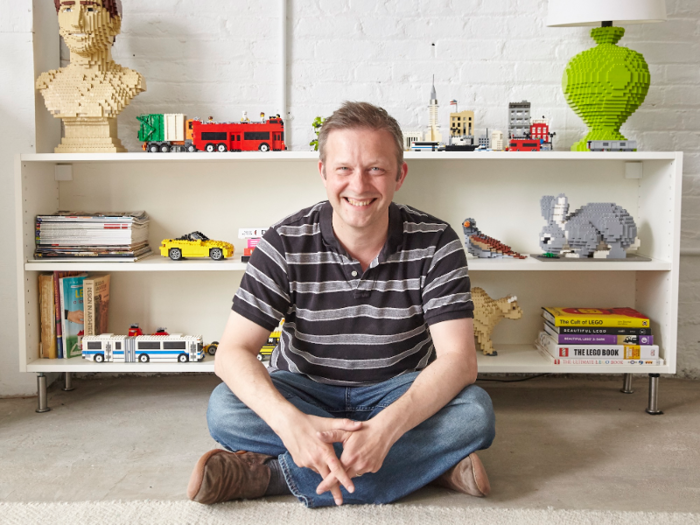
Kenney's days are now spent creating art in his studio, which features a 35-foot long, 12-foot high wall of "clear bins filled with a rainbow of LEGO bricks to work from."
"My assistants and I are always hunkered over half-built constructions and surrounded by plenty of prototypes, drawings, photos on computer screens, parts organizers filled with LEGO bricks, hand tools, and a coffee cup or three," Kenney said.
"Right now I'm looking at projects underway to build a 4-foot-tall pansy, an 8 foot tall perilous cliffside inhabited by blocky mountain goats, and the chubby tires of what will become a very large, very cartoony bicycle sculpture," he said.
Kenney encourages budding artists to focus on creating work that's 'interesting, or pretty, or meaningful'
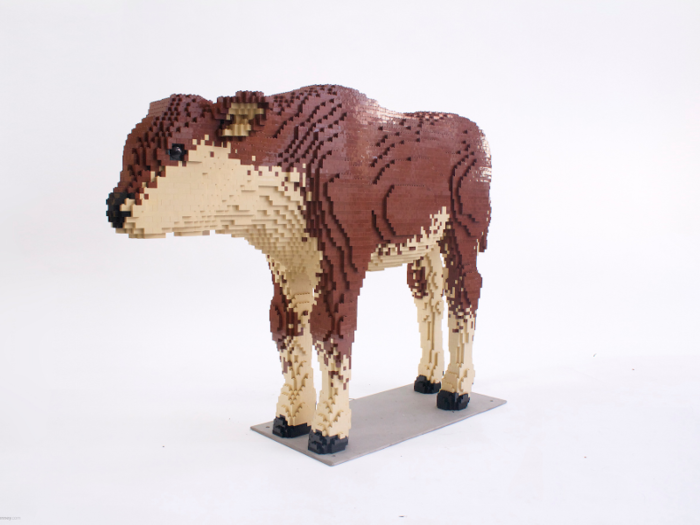
Kenney's team consists of individuals with a range of artistic and creative backgrounds, and, on any given day, five to seven of his exhibitions are open around the world.
When it comes to advice for people who dream of creating art with LEGOs, Kenney said to keep building.
"I didn't wake up one morning building 50,000 piece sculptures; I've gained all of my technical building knowledge by simply building over and over all my life, but my desire to create comes from within," he said.
Kenney also said to not focus so much on the LEGOs themselves. Instead, think about what you want to create.
"First, you need to make sure it's interesting, or pretty, or meaningful in some way," he said. "By thinking about your work this way, I think it will force you to create things that are great beyond the initial novelty of the medium, and hopefully have lasting power and greatness."
Gary Drayton was bitten by the treasure hunting bug early on
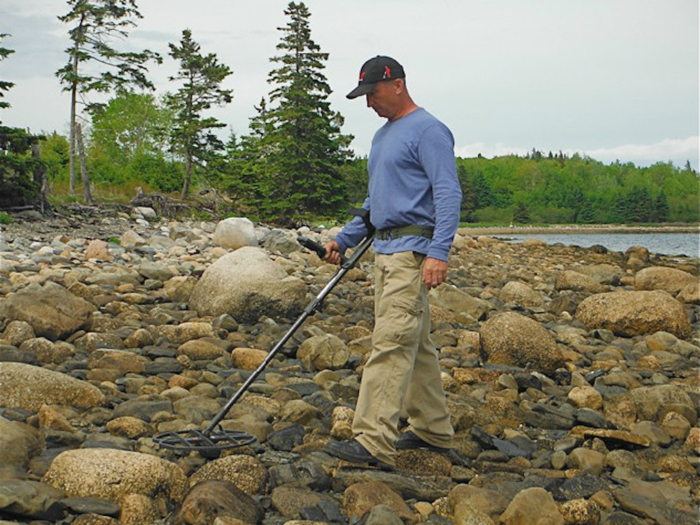
Gary Drayton kept his eyes on the ground while growing up in Grimsby, England.
He would often scour the fields of Lincolnshire for unearthed treasures while walking around or working on potato, cauliflower, and cabbage farms. Like many places in England, the land there is constantly spitting out artifacts — coins, clay pipes, and old bottles. Sometimes, more dangerous finds surface, too.
"I'd be in the fields working with a hoe, and you'd hear a little clink and you'd look down and it's a bomb," Drayton told Business Insider. "That's the thing about England. You're walking over history. I was always fascinated with it."
Drayton even began joining a friend on "mud larking" or "mud hopping" expeditions. They'd head over to the riverbed and try to spot valuables in the muck.
It's a habit that Drayton never kicked, in a sense. He's since lent his treasure-finding expertise to History Channel's "Curse of Oak Island" and authored a number of books on treasure hunting, including "Hardcore Beach Hunting" and "How to Read the Beach and Water."
Drayton's hobby became more lucrative when he moved to Florida
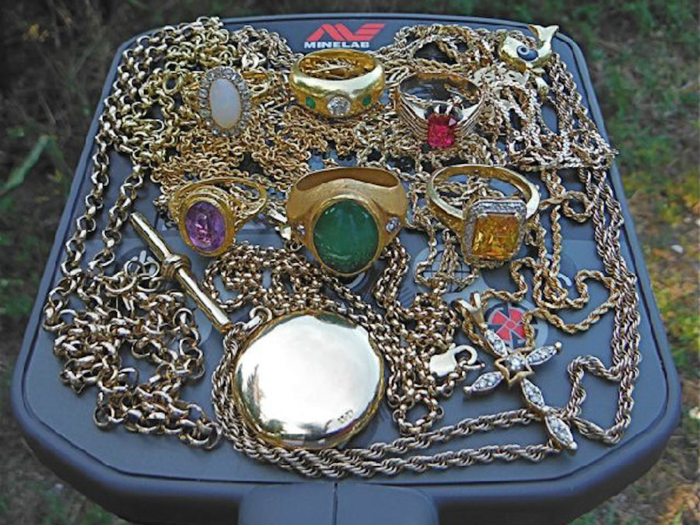
In the beginning, Drayton had a hard time making money from his hobby — and not because he wasn't good at finding old, decorative bottles to sell.
"My problem was I kept it all, because, to me, it's beautiful," he said.
In the meantime, Drayton became a painter and paper-hanger, although he kept searching for valuables as a "serious hobby." Initially, he said he thought using a metal detector was "cheating," but he changed his mind when he found a gold coin along the river bank.
Drayton moved to the United States in 1989, and he found himself painting a condo on the Treasure Coast of Florida just after Hurricanes Francis and Jeanne swept across the state in 2004. On a whim, he decided to sweep a nearby beach with his metal detector. The search was fruitful; Drayton found a silver Spanish dollar.
"I'm like, 'You've got to be kidding me,'" he said. "Once you find your first piece of Spanish treasure, and you see that big cross on it and that shield on the other side — oh my God. I was like, 'This is easy.'"
He started combing the beaches every day for about three months, plucking Spanish coin after Spanish coin out of the sand. And then, in 2005, he struck gold.
He estimates he's found about $1 million worth of loot over the years
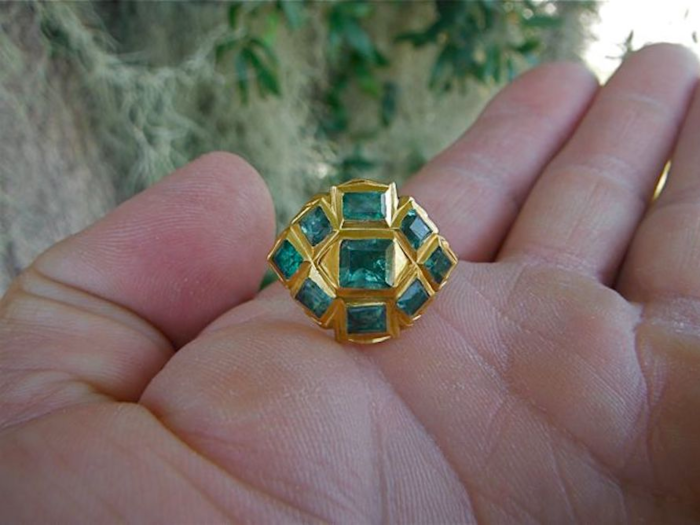
In 2005, Drayton discovered a highly valuable Spanish emerald treasure ring, which he's nicknamed "Precious."
Drayton since found a couple hundred silver treasure coins, two other treasure rings, and a religious artifact on other treasure hunts. He estimated that his historical finds come out to about $1 million, altogether.
He's also unearthed more modern valuables. Since 2006, he estimated he's averaged a pound of gold every year, just in jewelry.
"I got really, really good at finding Rolexes and diamond rings," Drayton said.
Drayton's helped people track down their missing heirlooms
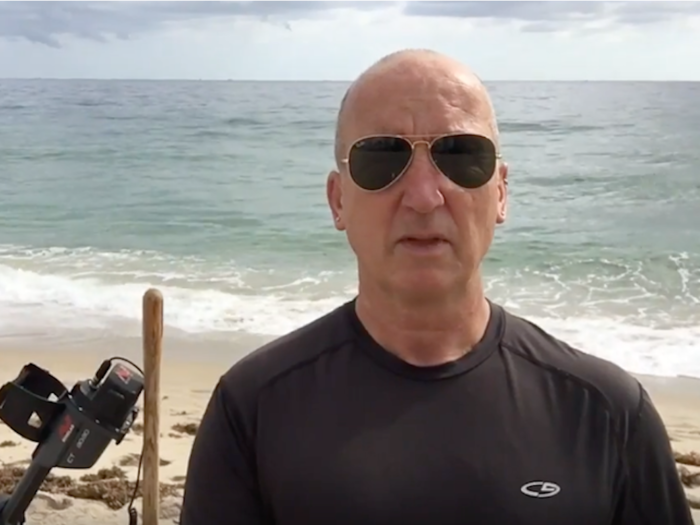
Whenever he's able to track down the owner of a more modern piece of jewelry, he does so. Drayton recalled metal detecting in Miami Beach and meeting a distraught man, who had just lost late his father's gold ring.
"The dad left Cuba on a raft and all he had was a ring," Drayton said. He volunteered to help, and found the missing ring just before the man was about to leave.
Otherwise, the finds go toward Drayton's nest egg. He said the treasure hunting has given him an unusual perspective on value.
"People are losing stuff nowadays and, in 300 or 400 years time, people will find it and say, 'Oh my gosh, I found a South Dakota quarter,'" he said.
He's since expanded to writing books, teaching lessons, and appearing on television programs
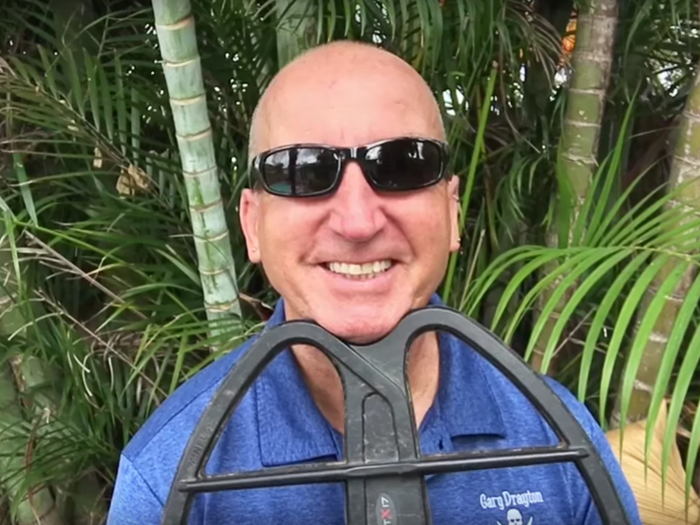
Drayton has also made money "selling the dream," through videos, books, and lessons. He's largely scaled back his painting business, but still sticks with a handful of regular customers.
He's also enjoyed his time on "The Curse of Oak Island," saying that co-star and fellow treasure hunter Rick Lagina is one of the nicest and hardest-working people he's ever met.
"Every one of those people on the island is passionate," he said. "People say, 'Oh, they're actors.' No, they're all passionate, exactly the same as me. That's why it works."
When it comes to advice for prospective treasure hunters, Drayton advises against revealing too much on social media.
"I see everyone putting up Youtube videos, and I'm like, 'You've got to be kidding me,'" he said. "Could you imagine if this happened in the gold rush days?"
As a food historian, Ashley Young is able to combine two of her passions
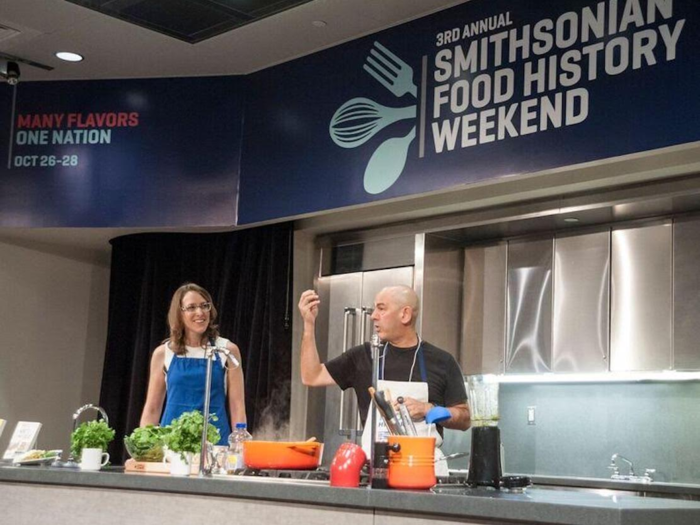
Ashley Young has long been dedicated to the study of food history — a focus that seems to run in her family. Her mother worked in a family-owned gourmet grocery store business, and her father is a historian.
So, as an undergraduate student at Yale, Young jumped at the chance to intern at the Southern Food and Beverage Museum in New Orleans.
"I was like, 'This is an interesting opportunity,'" she told Business Insider. "This kind of brings together my parents' professional interests, and I love both of their professions, so maybe I should give this a whirl."
Young now has a PhD in history from Duke University and works as a food historian at the Smithsonian National Museum of American History.
Talking to people is the highlight of Young's job
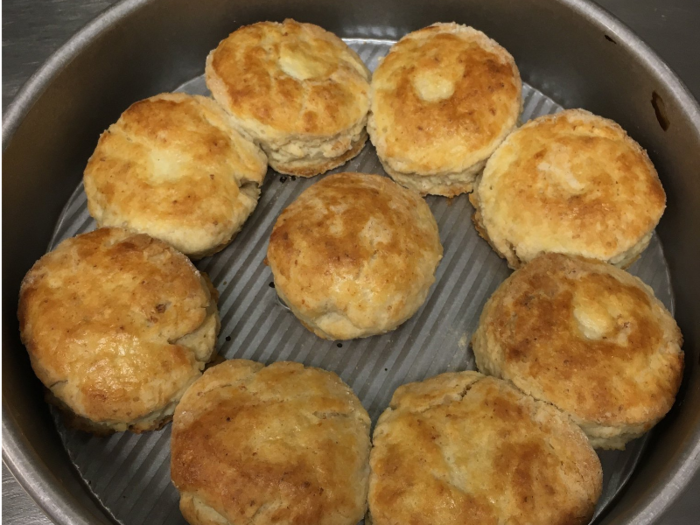
As a food historian, Young's days revolve around refreshing the museum's food exhibition, conducting research, and interviewing a range restaurateurs, chefs, and home cooks.
"We're always going into the field, so to speak, to meet with these amazing chefs, restaurateurs, culinary activists, and it is the highlight of my job," Young said. "Meeting people who are so passionate about food and just want to share their story. It's awesome, and it's part of my work."
Interviewees have ranged from a DC-based Ethiopian restaurateur to a cookbook author in Durham, North Carolina whose culinary focus hinged.
For Young, speaking with people about food and cooking is the highlight of her job.
"There's nothing like sharing a meal with someone as they're telling you why food matters to them," Young said.
Young is also basically a historical Martha Stewart

Young also hosts Cooking Up History, an hour-long cooking demonstration held in the Smithsonian's professional kitchen on the first floor of the museum.
Young and her guests whip up historical dishes, like Franklin cakes — a 19th century recipe for a dessert baked to honor Benjamin Franklin's birthday. Guests have included Top Chef's Sheldon Simeon who was on the food network to food author Simon Majumdar.
"We actually invite a chef or home cook and sometimes celebrity chefs to come in and prepare live on stage to recipes," Young said. "I'm the host, so I always say I'm kind of like Martha Stewart."
Young's best advice for pursuing your dream job is connecting with others
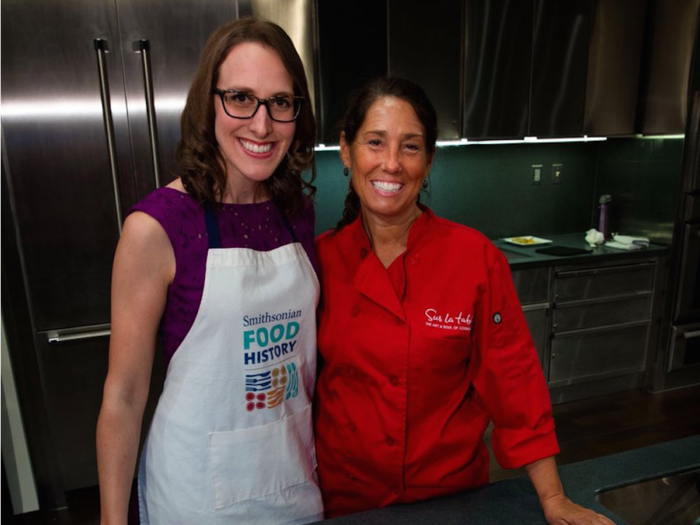
When it comes to landing your dream job, Young recommended doing more than just networking. She credits her job to being invited to speak about her dissertation at the Smithsonian in 2014 and connecting with a number of people in the food history program.
"It's like active networking but it's about building friendships and building relationships because it might be these people you are working with one day," Young said.
Benjamin Kalb visited his first cat café on a trip to Japan — and thought it'd be cool to bring back to New York City
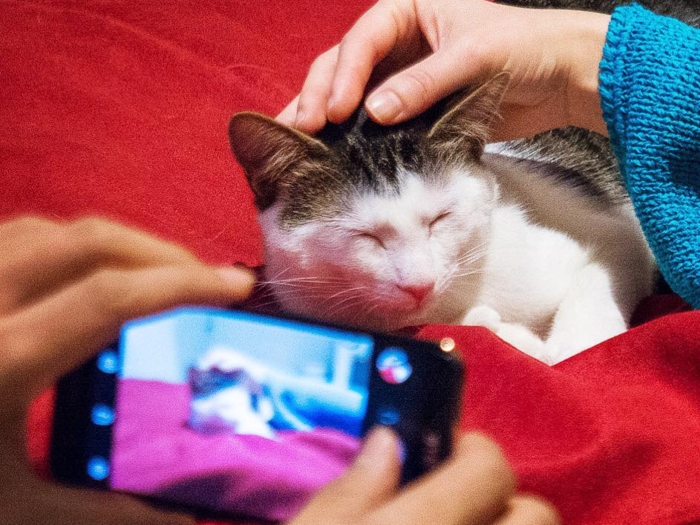
Benjamin Kalb was sitting in a cat café in Japan when a thought struck him.
"I was just thinking to myself, 'Wow this is really cool and I wonder why it doesn't exist in the US?'" he told Business Insider.
Kalb, a cat owner and experienced cook, decided to bring the idea back to New York City. While navigating the requirements of licensing the business, he returned to Japan for more inspiration.
"I travelled around a few different cities and visited about 30 cat cafes to study what was working and how they were set up," he said. "I asked them questions. That definitely informed a lot of the choices I made early on."
The cats at Koneko are all available for adoption
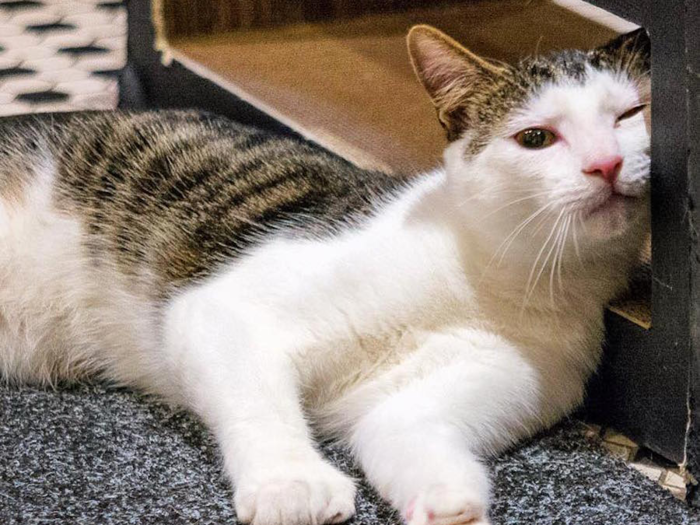
The result was Koneko, which opened up in 2015. One major factor sets the Manhattan cat café apart from its Japanese forebears: you can adopt the Koneko cats, through local rescue service Anjellicle Cats.
"We foster local rescue cats and they're all there for adoption," he said. " That's extremely important to the overall mission of the place. It's celebrating how fun and greats cats are, and then, we have a real mission to get these cats adopted."
Kalb estimated 200 to 250 cats have been adopted through Koneko so far.
There's more to running a cat café than hanging out with kitties all day
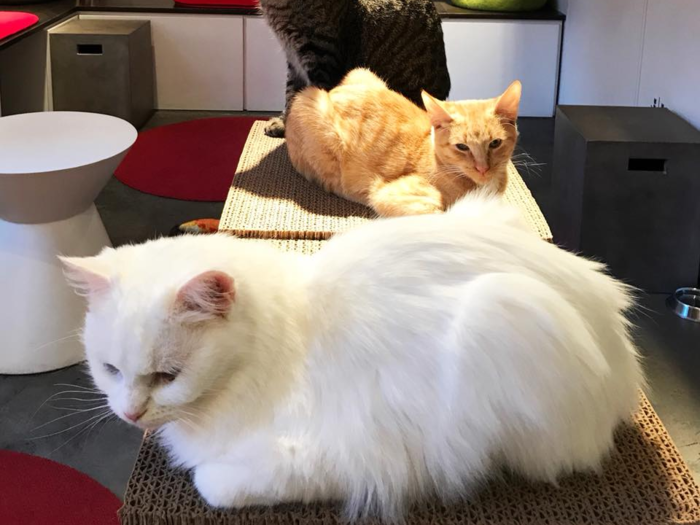
In terms of his average day to day, Kalb wears a number of hats. He runs the cafe, monitors the cats, thinks up new menu items, and subs in as the barista or cook.
"I've had people say, 'Wow, this is the greatest job ever,'" Kalb said. "Yeah, it is, to me, the greatest job ever. I'm really happy to come in everyday, and I think everyone is. But there's definitely more to it than diving into a pile of cats and cuddling. It's part of it, but only a part of it."
Kalb said hanging out in the café is a surefire way to reduce your stress
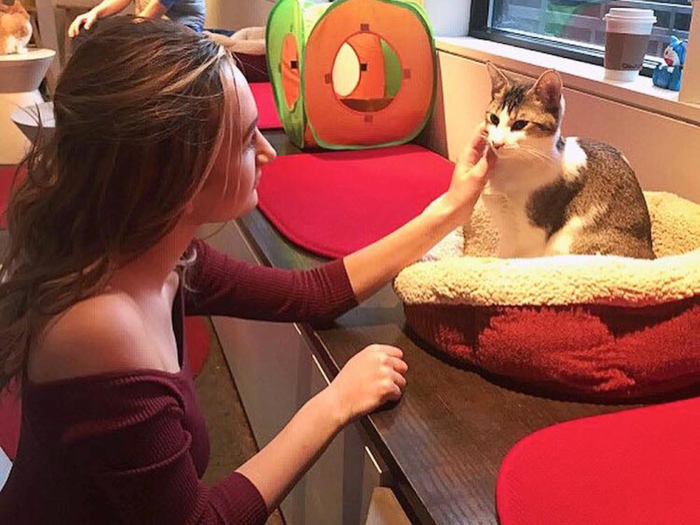
He said that he especially enjoys interacting with first-time customers, who often arrive not knowing what exactly to expect.
"They are in there with 10 cats or 15 cats running around, and their shoulders sink and their blood pressure goes down and they are happier," he said.
Kalb added that the café adoption mission also makes the job "extremely gratifying."
"I kind of can't believe it because it just started with this crazy idea," he said. "Now when I see the place, and people are adopting cats, it's kind of mind blowing to me that people want to come and support us."
Theresa McCulla travels the country visiting breweries as a beer historian
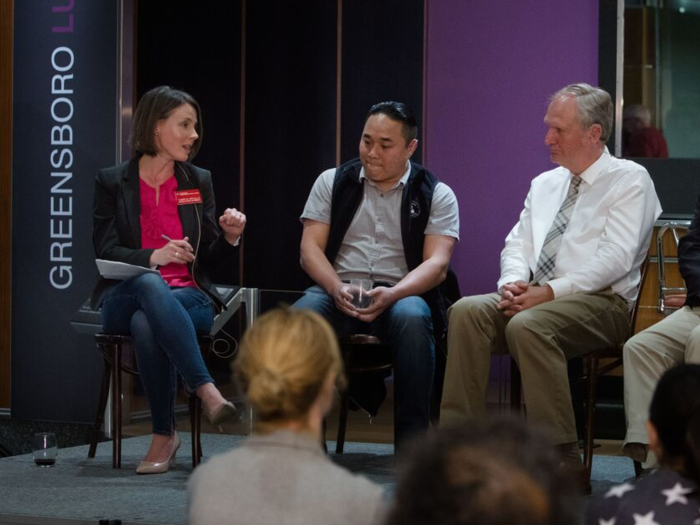
As the Smithsonian National Museum of American History's resident beer historian, Theresa McCulla has what is perhaps one of the most coveted jobs in America.
But her path to the gig wasn't always linear. Earlier in her career, she held down "one of the least freaky jobs" at the CIA, working as a media analyst. As she began to pursue part-time work for a DC restaurant, bakery, and food writer and historian Joan Nathan, she realized that she needed to make a change.
"All that did confirm that I like food and cooking and wanted to transition into that realm," McCulla told Business Insider.
The Smithsonian's beer historian job posting got a ton of coverage, and she decided to go for it
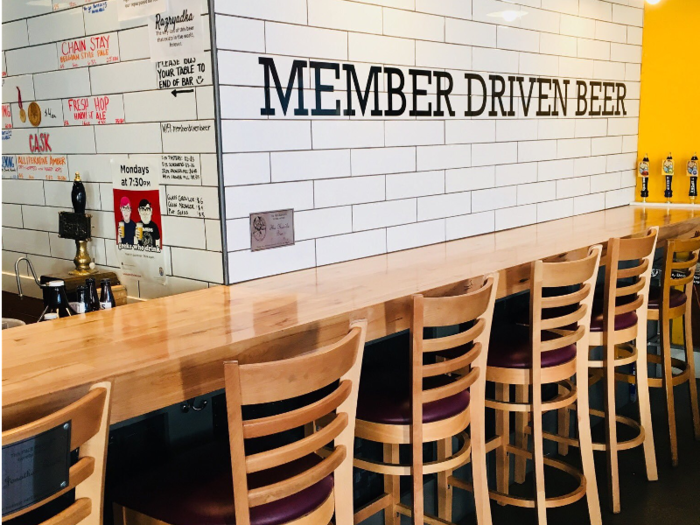
In 2010, she returned to Harvard College, her alma mater, to work in dining services and support the school's nutritional education program. She went on to earn her PhD in American studies from Harvard.
Then, in 2016, Smithsonian posted a unique job opportunity — a role for a traveling, beer-drinking historian. The role ended up getting quite a bit of press and McCulla, who was living Albuquerque, decided to give it a shot and apply.
Her days consist of brewery visits, interviews, reviewing the museum's collection, and helping people research the history
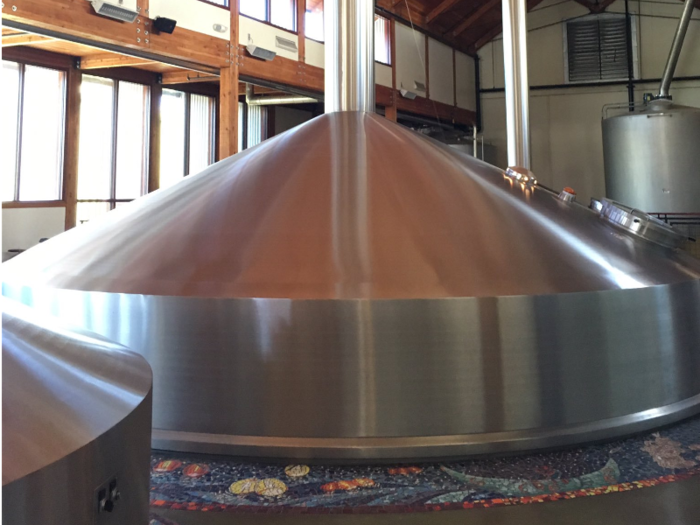
She ended up landing the gig. McCulla has been to Seattle, Northern California, and Colorado, so far, to sample beers and record brewers' oral histories.
"I tour breweries or classrooms where brewing science is taught or visit all kinds of other wonderful and interesting people involved in the brewing industry," she said.
When she's back in the office, she reviews museum collections, conducts research, and helps out members of the public with questions.
"A lot of people are interested in historical brewing methods, so I might hear from someone who says 'I want to brew like it's 1840, where might you direct me for that kind of question?'" she said.
It's an interesting time to study brewing, according to McCulla
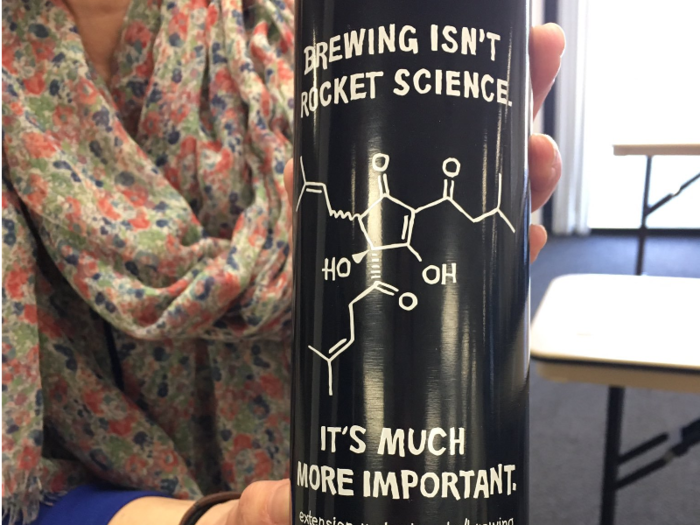
While coverage of the Smithsonian's initial job posting focused on the perk of getting to drink a lot of beer, McCulla said she doesn't drink in the office. She does sample beers while traveling to different breweries, partly in order to record taste profiles.
McCulla said it's a fascinating time to study the world of American brewing, given the advent of the craft brewery revolution.
"There are fantastic breweries everywhere, and they all have stories to tell and each region is really developing a neat brewing culture that might be similar to or different from the culture 100 years ago," she said. "The purpose of this job is to really chronicle a phenomenon that is really contemporary. The number of breweries has just been exploding."
For McCulla, the beer's secondary to the people she meets along the way
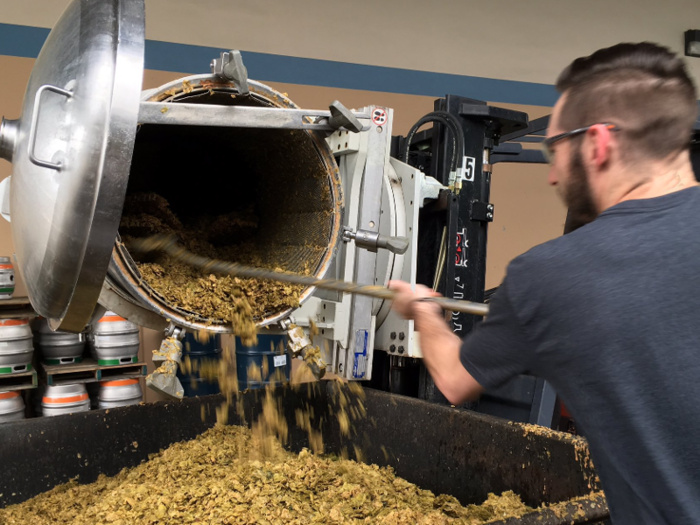
For McCulla, the "story of brewing" is largely about creativity, competition, consolidation, and entrepreneurship. So, for her, the best part of the job is meeting and speaking with the brewers themselves.
"The brewing industry is famously collaborative," she said. "There's a sense of camaraderie even if its grown enormously overtime. I love hearing the stories that people have to tell, when I sit down to ask people about their childhood memories of their food and drink and transformative experiences related to beer and brewing."
Popular Right Now
Popular Keywords
Advertisement